Building An Energy Efficient Home: Green Living Made Easy
Ready to make a positive impact on the environment? Building an energy efficient home is easier than you think. Imagine reducing your carbon footprint and saving money on utility bills.
By installing solar panels, using tankless water heaters, and purchasing Energy Star certified appliances, you can create a home that is both environmentally friendly and cost-effective.
With LED lighting, passive solar home design, and efficient earth-sheltered homes, you’ll be living sustainably without sacrificing comfort. Let’s explore the options to make your dream home a reality.
Key Takeaways
- Evaluating current energy consumption and identifying areas of high usage is essential for building an energy-efficient home.
- Investing in energy-efficient technologies like solar panels, tankless water heaters, Energy Star certified appliances, and LED lighting can significantly reduce energy waste and utility bills.
- Sustainable landscaping and water conservation techniques, such as choosing native plants, implementing drip irrigation, and collecting rainwater, can contribute to overall energy efficiency.
- Upgrading insulation, windows, appliances, and lighting, as well as sealing air leaks, are crucial steps in making an old home energy efficient.
Assessing Current and Future Energy Needs
To determine your current and future energy needs, you’ll need to assess your household’s energy usage and consider any potential changes or additions to your home.
Building an energy efficient home is not only environmentally conscious but also a smart way to save money on your energy bills. Start by evaluating your current energy consumption by reviewing your utility bills and identifying any areas of high usage. Look for ways to reduce energy waste, such as insulating your home properly and sealing any air leaks.
Consider investing in energy-efficient appliances and lighting, as well as renewable energy sources like solar panels. Additionally, think about any future changes or additions to your home, such as a growing family or home office, and how they may impact your energy needs.
Installing Solar Panels
Installing solar panels can significantly reduce your electricity bills. Not only will you save money, but you’ll also be making a positive impact on the environment. Here are some key benefits of installing solar panels:
- Renewable energy source: Solar panels harness the power of the sun, a clean and renewable energy source.
- Lower carbon footprint: By using solar energy, you reduce your reliance on fossil fuels, which helps decrease greenhouse gas emissions.
- Energy independence: Generating your own electricity with solar panels gives you more control over your energy consumption and reduces your dependence on the grid.
- Long-term savings: While the initial investment may seem high, solar panels pay for themselves over time through savings on your energy bills.
- Government incentives: Many governments offer financial incentives and tax credits to encourage the use of solar energy, making it more affordable for homeowners.
Using Tankless Water Heaters
Using a tankless water heater can provide hot water on demand, saving you both time and energy. Tankless water heaters, also known as on-demand water heaters, heat water directly as it flows through the device, eliminating the need for a storage tank.
This not only eliminates the energy wasted in keeping a large tank of water constantly hot but also ensures that you never run out of hot water again. When building an energy-efficient home on a budget, installing a tankless water heater is a smart choice.
Not only will it reduce your energy consumption and utility bills, but it will also help reduce your carbon footprint. In Canada, where energy-efficient homes are highly valued, many energy-efficient home builders recommend tankless water heaters as a key component of green living.
| Pros | Cons |
|---|---|
| Energy-efficient | Higher upfront cost |
| Space-saving | Limited hot water flow rate |
| Long lifespan | Requires professional installation |
Purchasing Energy Star Certified Appliances
When shopping for new appliances, it’s important to look for the Energy Star certification to ensure energy efficiency and cost savings. Energy efficient homes rely on appliances that use less energy, reducing both your carbon footprint and your monthly utility bills.
Here are five reasons why purchasing Energy Star certified appliances is a smart choice for your home:
- Energy savings: Energy Star appliances use up to 30% less energy than non-certified models, helping you reduce your energy consumption and save money.
- Environmental benefits: By using less energy, these appliances contribute to a cleaner environment, reducing greenhouse gas emissions and promoting sustainability.
- Performance: Energy Star appliances go through rigorous testing to ensure they meet high standards for efficiency, performance, and durability.
- Rebates and incentives: Many utility companies offer rebates and incentives for purchasing Energy Star appliances, making them even more affordable.
- Peace of mind: With Energy Star certification, you can trust that your appliances are designed to be reliable, efficient, and long-lasting.
Investing in energy efficient home improvements like Energy Star certified appliances not only benefits the environment but also adds value to your home while providing you with the comfort and savings you desire.
Installing LED Lighting
To upgrade your lighting fixtures, consider replacing traditional bulbs with LED lights for increased energy savings and a longer lifespan. LED, or Light Emitting Diode, lighting is a smart choice when building an energy efficient home. Not only do LED lights use up to 80% less energy than traditional incandescent bulbs, but they also last up to 25 times longer.
By installing LED lighting throughout your home, you can reduce your energy consumption and save money on your electricity bills. Here is a simple comparison between traditional incandescent bulbs and LED lights:
| Bulb Type | Energy Usage (Watts) | Lifespan (Hours) |
|---|---|---|
| Incandescent | 60 | 1,000 |
| LED | 9 | 25,000 |
As you can see, LED lights not only use less energy, but they also have a significantly longer lifespan. By making the switch to LED lighting, you can make a positive impact on the environment while enjoying the benefits of energy savings and durability.
Adding Spray-Foam Insulation
Now that you’ve installed LED lighting in your home, it’s time to take the next step towards building an energy efficient home: adding spray-foam insulation. This insulation not only helps regulate the temperature inside your home, but it also reduces energy consumption and lowers your carbon footprint.
Here are some key reasons why spray-foam insulation is a great choice:
- Improved energy efficiency: Spray-foam insulation creates an airtight seal, preventing drafts and reducing heat loss, which means lower energy bills and a more comfortable living space.
- Enhanced indoor air quality: This insulation acts as a barrier against pollutants, allergens, and moisture, promoting a healthier environment for you and your family.
- Durability: Spray-foam insulation is long-lasting and can withstand harsh weather conditions, ensuring that your home remains energy efficient for years to come.
- Noise reduction: The dense structure of spray-foam insulation helps minimize external noise, creating a quieter and more peaceful home.
- Environmentally friendly: By reducing energy consumption, spray-foam insulation helps combat climate change and contributes to a more sustainable future.
With spray-foam insulation, you’re one step closer to achieving an energy efficient home that benefits both you and the planet.
Incorporating Smart Home Devices
Incorporating smart home devices can greatly enhance the functionality and convenience of your living space. With the advancement of technology, these devices offer numerous benefits to those who are building an energy efficient home and striving for green living made easy.
Smart thermostats, for example, allow you to control the temperature of your home remotely, ensuring optimal energy usage and cost savings.
Smart lighting systems enable you to adjust the brightness and color of your lights, creating the perfect ambiance while reducing energy consumption.
Additionally, smart plugs and power strips can automatically turn off electronics when not in use, further reducing energy waste.
Implementing Sustainable Landscaping
Creating a sustainable landscape for your property can be achieved by choosing native plants and implementing water-saving irrigation systems. By following these simple steps, you can create an environmentally friendly outdoor space that complements your energy efficient home.
- Choose native plants: Native plants are adapted to the local climate and require less water, fertilizers, and pesticides to thrive. They also provide habitat for birds, butterflies, and beneficial insects.
- Install drip irrigation: Drip irrigation delivers water directly to the plant roots, minimizing water waste through evaporation or runoff.
- Mulch your garden beds: Mulching helps retain moisture in the soil and reduces weed growth, reducing the need for excessive watering and herbicides.
- Collect rainwater: Installing a rain barrel or cistern allows you to capture and store rainwater for future irrigation needs.
- Use organic fertilizers: Organic fertilizers promote healthy soil and plant growth without harmful chemicals, protecting the environment and your family’s health.
Reaping the Benefits of Energy Efficiency
To fully experience the benefits of energy efficiency, you can start by making small changes to your daily habits and routines. By building an energy efficient home and adopting green living practices, you can not only reduce your carbon footprint but also save money in the long run.
An energy efficient home is designed to minimize energy waste and maximize the use of renewable resources. This can be achieved through proper insulation, energy-efficient appliances, and smart home technology. By investing in these features, you can lower your energy bills, improve indoor air quality, and contribute to a healthier environment.
Additionally, reaping the benefits of energy efficiency goes beyond financial savings. It allows you to take an active role in conserving resources and creating a sustainable future for yourself and future generations. So why not join the growing community of environmentally conscious individuals and start building your energy efficient home today?
Making an Old Home Energy Efficient
Transforming an old home into an energy-efficient space can be a cost-effective and sustainable way to reduce energy consumption. By implementing simple changes and upgrades, you can make your home more energy efficient and contribute to a greener future.
Here are five steps to get you started:
- Upgrade insulation: Adding insulation to your walls, attic, and floors can significantly reduce heat loss and improve energy efficiency.
- Install energy-efficient windows: Replace old windows with double-pane or low-E windows to prevent heat transfer and reduce energy usage.
- Upgrade appliances: Replace outdated appliances with energy-efficient models that have a higher energy star rating.
- Switch to LED lighting: Replace traditional incandescent bulbs with LED lights, which consume less energy and last longer.
- Seal air leaks: Identify and seal any gaps or cracks in windows, doors, and ductwork to prevent air leakage and improve energy efficiency.
Achieving Energy Efficiency in Log Homes
Now that you have explored making an old home energy efficient, let’s delve into achieving energy efficiency in log homes. Log homes have a unique charm and warmth that many people desire. The good news is that you can still have a cozy log home while also being environmentally conscious and energy efficient.
When building an energy efficient log home, it’s important to consider the insulation. Choose logs that have been properly kiln-dried and have a tight fit to prevent air leakage. Additionally, adding insulation between the logs and using energy-efficient windows and doors will help to minimize heat loss.
Another aspect to focus on is the heating and cooling system. Opt for a high-efficiency HVAC system that can effectively regulate the temperature without consuming excessive energy. Incorporating advanced insulation techniques, such as using double walls or insulated roof panels, can further enhance energy efficiency.
Selling an Energy-Efficient Home
If you’re looking to sell your energy-efficient home, consider highlighting its eco-friendly features and cost-saving benefits.
Potential buyers are increasingly interested in living a sustainable lifestyle and reducing their carbon footprint. By emphasizing the green living aspects of your home, you can attract environmentally conscious buyers who value energy efficiency.
Here are some key features to showcase:
- Solar panels: Highlight the ability to generate clean and renewable energy, reducing reliance on fossil fuels.
- Energy-efficient appliances: Mention the energy-saving benefits of appliances that are designed to consume less electricity.
- Insulation: Emphasize the high-quality insulation that keeps the home comfortable year-round and reduces energy consumption.
- Water-saving fixtures: Highlight the water-efficient faucets, showerheads, and toilets that help conserve water resources.
- Smart home technology: Showcase the integrated systems that allow for efficient energy management and monitoring.
Realizing Money Savings in Energy-Efficient Homes
By highlighting the cost-saving benefits of energy-efficient homes, you can attract buyers who are looking to save money on their utility bills. Building an energy-efficient home not only helps the environment but also puts money back in your pocket.
Here are some tips for building an energy-efficient home that will help you maximize your savings.
First, focus on insulation. Properly insulating your home will prevent heat loss in the winter and keep the cool air in during the summer, reducing your need for heating and cooling.
Second, invest in energy-efficient appliances and lighting. By using appliances and lights that are energy-efficient, you can significantly lower your energy consumption and, in turn, your utility bills.
Finally, consider using renewable energy sources like solar panels. While the initial cost may be higher, the long-term savings are substantial.
Striving for Ultra-Efficient Homes
To achieve the goal of ultra-efficiency, you should prioritize advanced insulation materials and techniques in your home construction. Here are some key factors to consider:
- Install high-quality insulation materials such as spray foam or cellulose insulation to minimize heat loss and gain.
- Seal all air leaks and gaps in your home’s envelope to prevent drafts and enhance energy efficiency.
- Opt for energy-efficient windows and doors that have low U-factor and Solar Heat Gain Coefficient (SHGC) ratings.
- Choose a cool roof with reflective materials to reduce heat absorption and lower cooling costs.
- Invest in an Energy Recovery Ventilation (ERV) system to improve indoor air quality while minimizing energy loss.
By implementing these measures, you can create an ultra-efficient home that not only reduces your carbon footprint but also qualifies you for potential incentives such as the energy efficient home improvement credit.
Join the growing community of homeowners committed to sustainable living and enjoy the benefits of an energy-efficient home.
Utilizing Advanced House Framing
You can maximize energy efficiency in your home construction by utilizing advanced house framing techniques. By incorporating these techniques, you not only reduce your energy consumption but also contribute to a more sustainable environment.
One method is using advanced framing, which minimizes the use of lumber, reducing waste and promoting better insulation.
Another technique is the installation of continuous insulation, ensuring that your home is well-insulated and airtight. This prevents heat loss in the winter and keeps your home cool in the summer, reducing the need for excessive heating or cooling. Additionally, incorporating energy-efficient windows and doors further enhances insulation and minimizes energy loss.
Installing Cool Roofs
Installing cool roofs can be an effective way to reduce energy consumption and keep your home cooler in the summer months. By choosing to install a cool roof, you are making a conscious effort to create a more environmentally friendly living space.
Here are a few benefits of installing a cool roof:
- Energy savings: Cool roofs reflect more sunlight and absorb less heat, reducing the need for air conditioning and saving you money on your energy bills.
- Extended roof lifespan: Cool roofs tend to last longer than traditional roofs because they are exposed to less heat and UV radiation.
- Improved indoor comfort: A cool roof can help maintain a more comfortable temperature inside your home, reducing the need for excessive cooling.
- Environmental impact: Cool roofs help reduce the urban heat island effect and lower greenhouse gas emissions.
- Government incentives: Many local governments offer incentives and rebates to encourage the installation of cool roofs, making it a cost-effective choice.
Utilizing Passive Solar Home Design
By incorporating passive solar home design principles, your house can naturally harness the sun’s energy to reduce heating and cooling costs.
Passive solar design utilizes the sun’s rays and natural ventilation to heat and cool your home, reducing your reliance on artificial heating and cooling systems.
Start by orienting your home to maximize exposure to the sun’s path, with large windows and thermal mass materials that absorb and store heat during the day and release it at night.
Insulate your home properly to prevent heat loss and use shading devices to control the amount of sunlight entering your home.
Exploring Efficient Home Design Options

Exploring different options for efficient home design can help reduce energy consumption and lower utility costs. By incorporating sustainable and environmentally-conscious practices into your home, you can create a space that not only saves you money but also reduces your carbon footprint.
Here are five efficient home design options to consider:
- Install energy-efficient windows and doors to minimize heat loss and gain.
- Invest in insulation to keep your home well-insulated and prevent energy leakage.
- Use energy-saving appliances and lighting fixtures to reduce electricity usage.
- Incorporate passive design elements, such as natural ventilation and daylighting, to maximize natural resources.
- Utilize renewable energy sources like solar panels or geothermal systems to power your home.
Incorporating Efficient Earth-Sheltered Homes
Incorporating efficient earth-sheltered homes can provide natural insulation and reduce energy consumption. By building your home partially or completely underground, you can take advantage of the earth’s natural temperature regulation. The thermal mass of the earth helps to maintain a constant temperature inside the home, reducing the need for heating and cooling systems.
Additionally, earth-sheltered homes can be designed to maximize natural light and ventilation, further reducing the reliance on artificial lighting and air conditioning. These homes are not only energy-efficient but also aesthetically pleasing, seamlessly blending into the natural landscape.
Earth-sheltered homes also offer the added benefit of increased protection against extreme weather events. By choosing to incorporate this innovative design, you can create a sustainable and comfortable living space while minimizing your carbon footprint and contributing to a healthier planet.
Utilizing Straw Bale Home Design
Now that you have learned about incorporating efficient earth-sheltered homes, let’s explore another innovative design for an energy-efficient home: straw bale construction. This eco-friendly building technique utilizes straw bales as the primary building material, providing excellent insulation and reducing energy consumption.
Here are some key features of straw bale home design:
- Superior insulation: The thick straw bale walls create a highly insulated envelope, keeping your home warm in winter and cool in summer.
- Renewable and sustainable: Using straw, a byproduct of grain production, as a building material reduces waste and promotes sustainability.
- Fire-resistant: Contrary to popular belief, properly constructed straw bale homes are highly fire-resistant due to the tightly packed bales and plastered walls.
- Healthy indoor environment: Straw bales are non-toxic and have low off-gassing, ensuring good indoor air quality.
- Aesthetic appeal: Straw bale homes offer a unique, rustic charm with their textured walls and curved corners, creating a cozy and inviting atmosphere.
Frequently Asked Questions
What Are the Benefits of Utilizing Advanced House Framing in Energy-Efficient Homes?
Using advanced house framing in energy-efficient homes has numerous benefits. It reduces thermal bridging, increases insulation space, and minimizes material waste. This helps you save on energy costs, creates a comfortable living environment, and reduces your environmental impact.
How Can Passive Solar Home Design Be Incorporated Into a New Home Construction?
To incorporate passive solar home design into your new home construction, you can optimize the orientation and placement of windows, use thermal mass materials, and utilize shading devices to maximize the natural heat and light from the sun.
What Are the Advantages of Using Tankless Water Heaters in Terms of Energy Efficiency?
Tankless water heaters offer significant energy efficiency advantages. They only heat water when needed, eliminating standby energy loss. You’ll save money on utility bills and reduce your carbon footprint, making you proud to be part of the green living movement.
Can Energy-Efficient Homes Be Achieved in Log Homes? if So, What Are Some Strategies to Achieve This?
Yes, energy-efficient log homes can be achieved. Strategies include maximizing insulation, using energy-efficient windows and doors, installing efficient heating and cooling systems, and incorporating renewable energy sources like solar panels.
How Can Cool Roofs Contribute to Energy Savings in Homes?
How can cool roofs contribute to your energy savings at home? They reflect sunlight and reduce heat absorption, keeping your home cooler and reducing the need for air conditioning. It’s a smart and eco-friendly choice!
Conclusion
Congratulations on completing the journey towards building an energy efficient home! By following the steps outlined in this article, you have taken significant strides towards a sustainable and environmentally conscious lifestyle.
Your decision to assess your energy needs, install solar panels, use tankless water heaters, purchase Energy Star certified appliances, install LED lighting, and incorporate efficient home design options shows your commitment to reducing your carbon footprint.
Remember, Rome wasn’t built in a day, and neither is an energy efficient home. Keep up the good work, and soon you’ll be reaping the benefits of a greener and more cost-effective lifestyle.
Keep going, and the sky’s the limit!
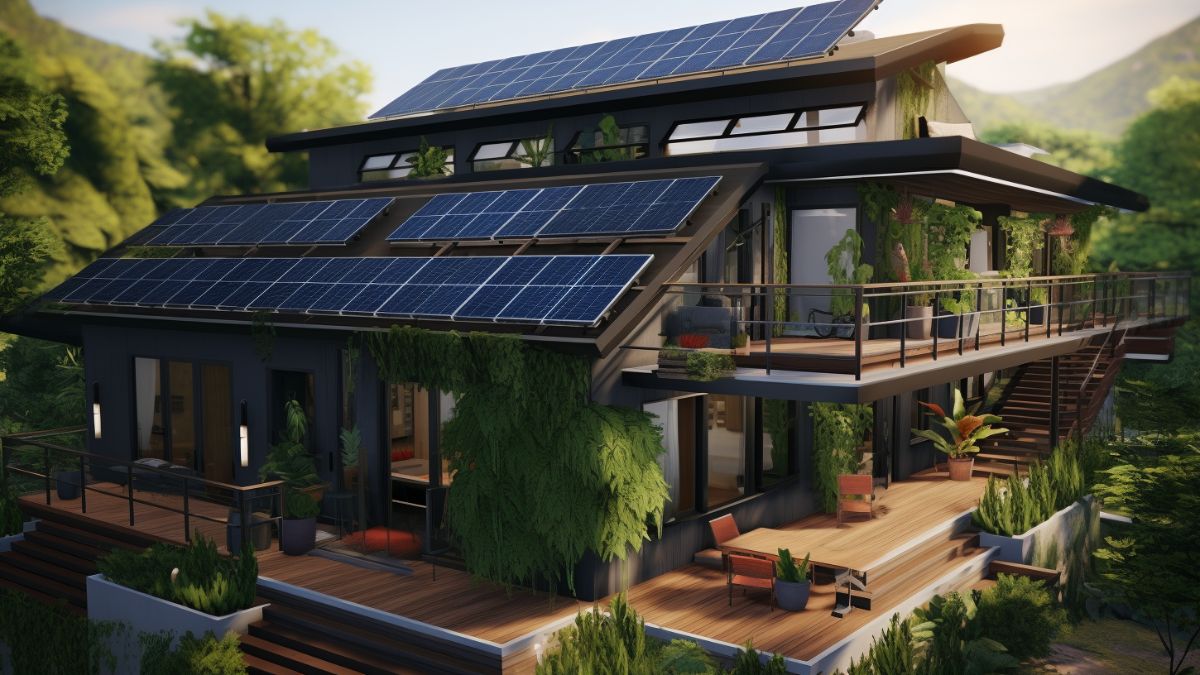
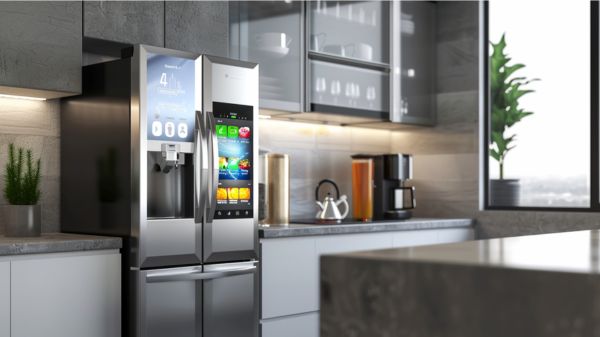
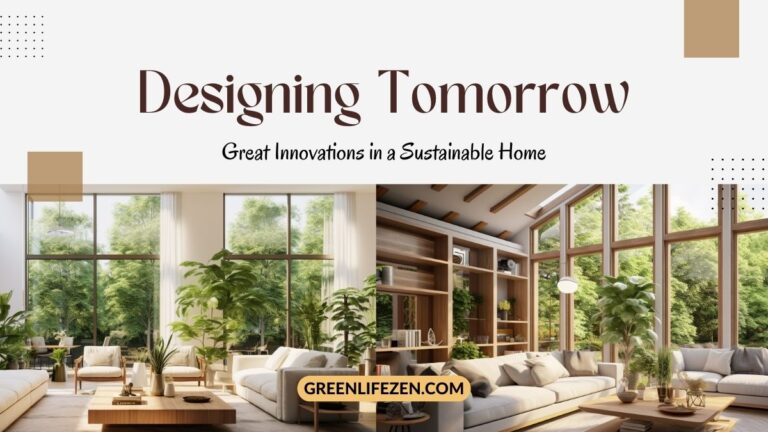
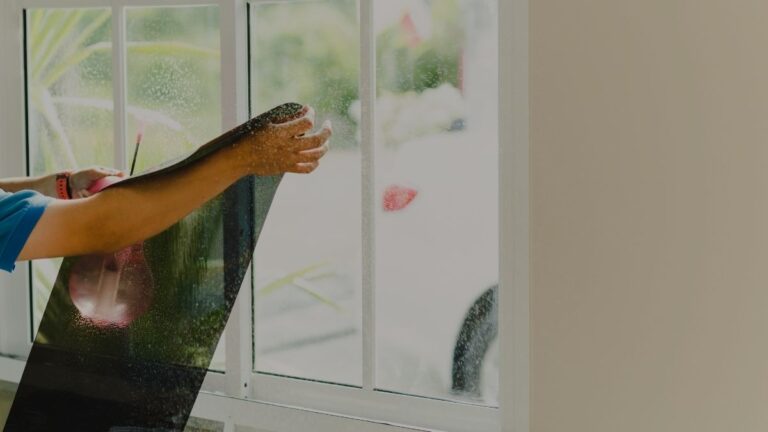
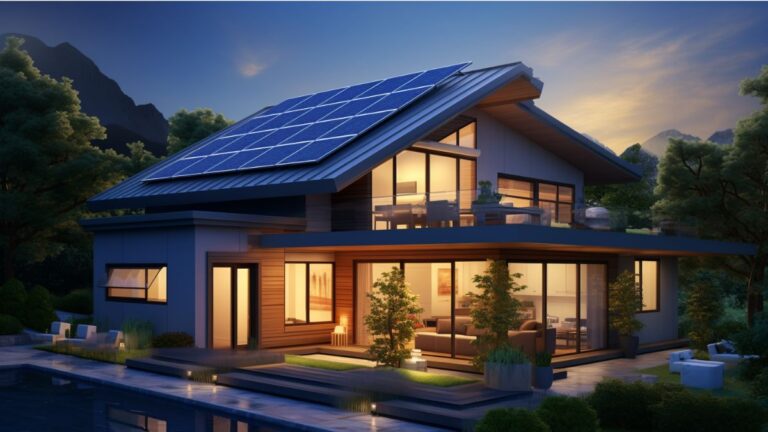
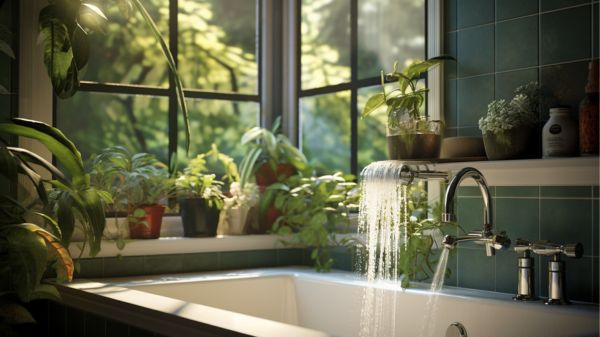
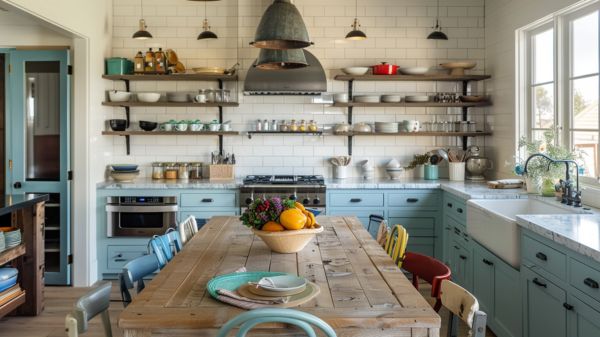
10 Comments
Comments are closed.